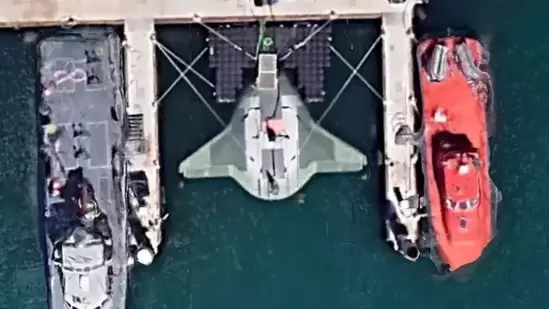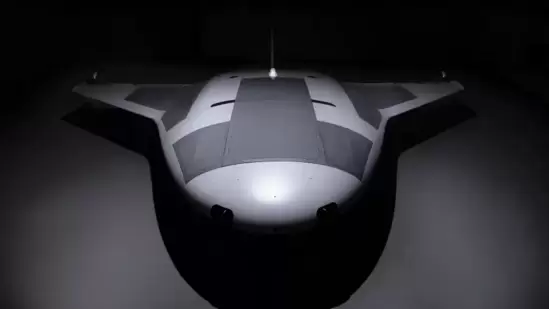A top-secret autonomous submarine developed by the US Navy has been spotted by Google Maps users near the coasts around Naval Base San Diego. This cutting-edge vessel, known as the Manta Ray, is the Navy’s latest autonomous underwater weapon produced by Northrop Grumman. The discovery has generated significant interest as it highlights the Navy’s advancements in long-term underwater missions.
The Manta Ray submarine, named after the sea creature due to its sleek design and ability to operate in low-power mode while anchored deep underwater, was seen at the Port Hueneme naval base in California. This unmanned undersea vessel (UUV) is part of a US Navy initiative aimed at developing long-range underwater weapons. The Manta Ray is designed to demonstrate critical technologies for a new class of long-duration, long-range, payload-capable UUVs.
Dr. Kyle Woerner, Manta Ray program manager at the Defense Advanced Research Projects Agency (DARPA), explained in a news release that the drone utilizes “efficient, buoyancy-driven gliding” to navigate through the water. The Manta Ray is capable of hibernating on the sea floor for extended periods without needing to refuel, making it a highly advanced underwater drone.

“Our successful, full-scale Manta Ray testing validates the vehicle’s readiness to advance toward real-world operations,” said Dr. Woerner. The Navy spent over three months rigorously testing the craft off the coast of Southern California, as reported by the Telegraph.
DARPA recently completed its field testing of the Manta Ray, which demonstrated the drone’s at-sea hydrodynamic performance. This included submerged operations using all the vehicle’s modes of propulsion and steering: buoyancy, propellers, and control surfaces.
One of the Manta Ray’s standout features is its modular design, which includes several payload bays of various sizes and types to accommodate a wide range of naval mission sets. This modularity allows the craft to be disassembled and transported in standard shipping containers, eliminating the need for specialized port facilities.
“If successful, this new class of UUV will give the combatant commander an amplification of capacity without disrupting current operations by remaining independent of manned vessels and ports once deployed,” DARPA stated.

Defense analysts speculate that the US Navy’s focus on developing drone technology, such as the Manta Ray, is aimed at countering the submarine operations of Russia and China. Russian underwater drones reportedly have a range of approximately 6,200 miles, can be armed with nuclear warheads, and can reach speeds of up to 100 knots (115 mph).
Dr. Kyle concluded his statement by emphasizing the innovative capabilities of the Manta Ray: “The combination of cross-country modular transportation, in-field assembly, and subsequent deployment demonstrates a first-of-kind capability for an extra-large UUV.”
The sighting of the Manta Ray aquatic drone underscores the US Navy’s advancements in autonomous underwater technology. As DARPA and the Navy continue to refine and deploy such cutting-edge systems, the Manta Ray is poised to play a crucial role in enhancing the Navy’s operational capabilities and addressing emerging global maritime threats.





